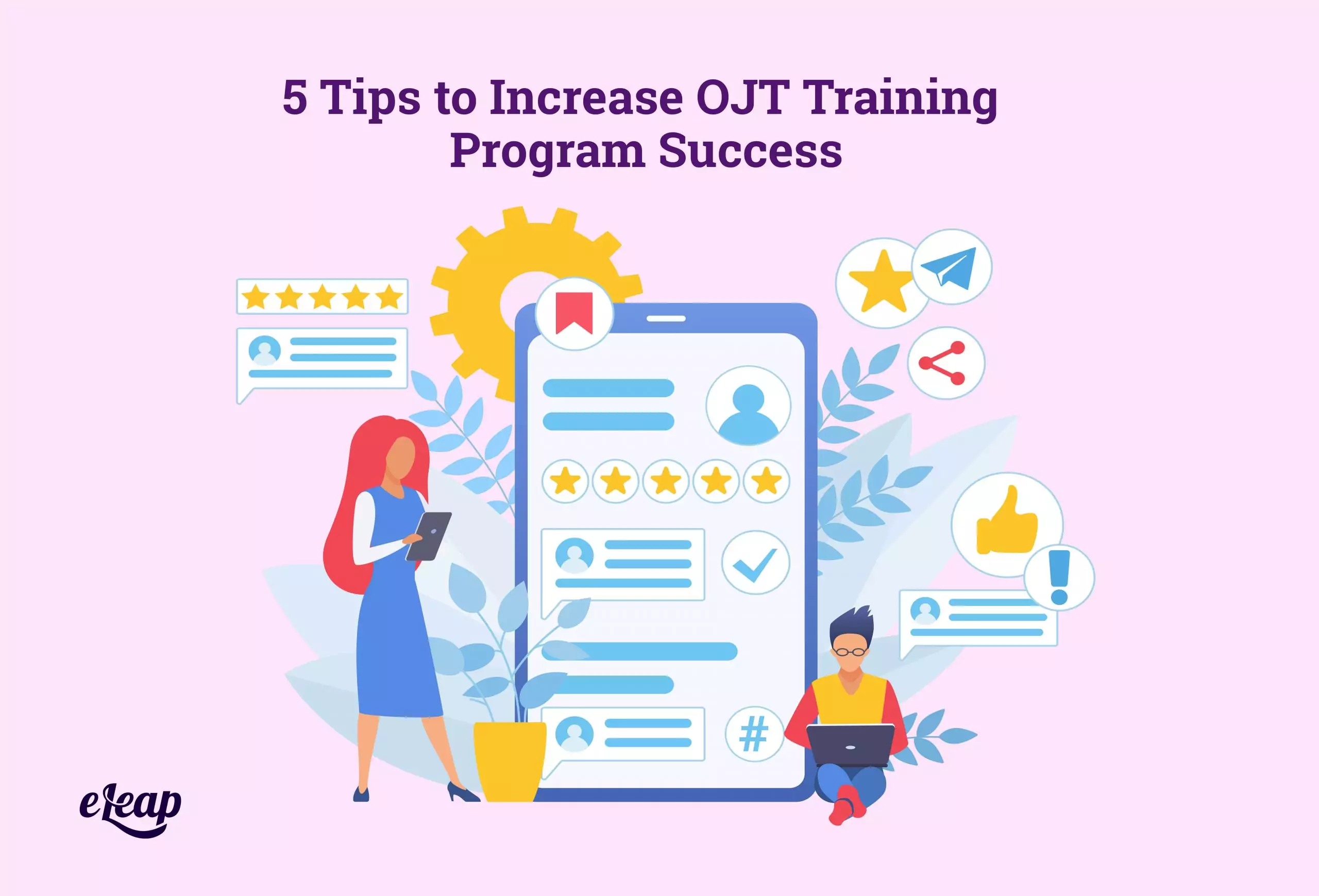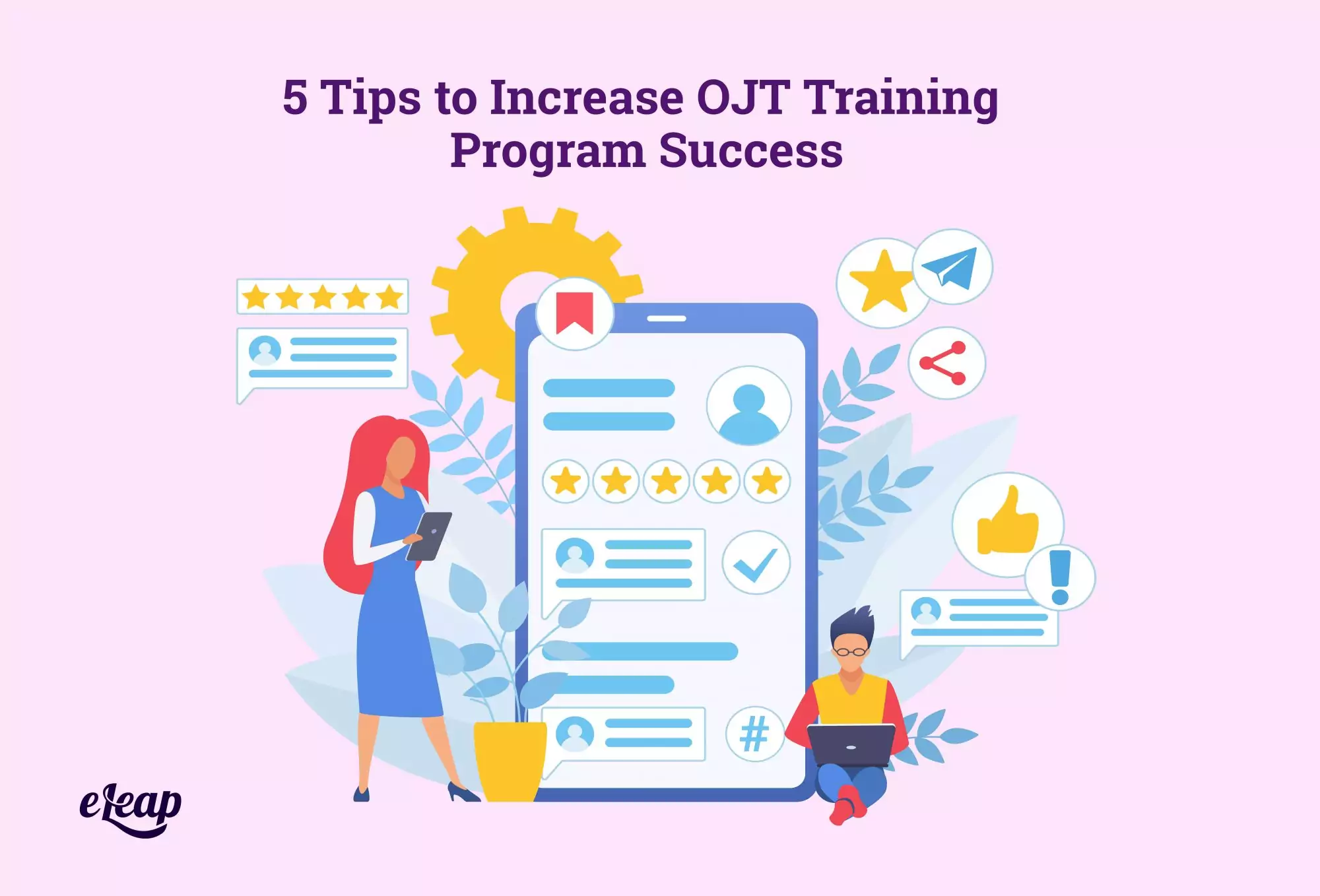5 Tips to Increase OJT Training Program Success

Learning on the job – it’s something we all do to some extent. Whether it’s getting acquainted with the layout of the new place of employment, learning the ins and outs of a position, or something more formalized, learning takes place all the time. On-the-job training, or OJT for short, can be a critical element in your success. However, it can also be a stumbling block. Most organizations don’t have a streamlined OJT training program for good reason. They think its complex and some don’t see the value.
Humans learn all the time, and that works great in many situations. When you are at home, you can watch YouTube videos to learn how to do something, such as remove a sliding glass door or fix a faulty light switch. You can take as long as necessary and not really have to worry about the impact on your day.
Workplace OJT is different, though. Employees do not have an unlimited amount of time. Resources are also consumed during training and must be accounted for. This often leads to a less formalized structure for on-the-job training. Employers seek to minimize lost time and the cost of other resources during the onboarding process. The eLeaP OJT tracking system can help.
While understandable, it’s not a beneficial situation. Yes, some individuals can indeed thrive in an informal OJT environment, but that does not apply across the board. Many people cannot. There is also the fact that taking an informal approach to on-the-job training can mean missed opportunities and advantages for the business itself.
The good news is that you can take control over your OJT process and reap the rewards here. It just requires understanding a few important steps. In this post, we will cover five crucial tips to increase the success of your OJT training program.

1. Embed It in Your Onboarding Process
First and foremost, you must make OJT a formalized part of your onboarding process. Understand that your new hires are going to learn on the job regardless, and it is better to be in control of the process than to leave it up to chance. Failing to take control and formalize onboarding OJT could mean allowing new hires to carry bad habits over from previous positions, set definitions for themselves in terms of what is acceptable in the workplace, and more.
By taking control and embedding OJT in the onboarding process, though, you can mold employee behavior correctly. There are other benefits to integrating OJT with your onboarding process, too. For instance, it ensures that, rather than sitting in front of a PC completing virtual training, the new employee is actually on the floor performing work while learning at the same time. However, you cannot simply throw a new employee into their role with no preparation.
To ensure the best chance of success here, make sure you know specifically what functions and duties the new employee will have. Next, ensure that you map those functions to learning content so that they can build their skills. Third, know who will be training your new hires and ensure that trainers have the time required to do the job correctly.
2. Ensure Leadership Is On Board
No training program can be successful without buy-in from leadership. This includes your OJT training program. Many leaders may be hesitant to accept it – the value might not be apparent, the time required to train an employee in this way may not seem to be available, and other misconceptions may derail the conversation.
To help get leadership on board with the idea, it’s important that you advocate for it. Explain the purpose, value, and benefits of OJT clearly. Find ways to get leaders involved in the process so they can experience it firsthand. Get feedback from leaders about the process, their thoughts on it, and whether any changes are needed. Finally, don’t let up. If you let OJT slide to the back burner, it becomes a lost cause.
3. Have the Right Materials
Too often, it’s assumed that OJT programs only require experiential understanding and do not need anything in the way of supporting materials. That is untrue. While most of the process will be conducted through hands-on experience, there are times that materials will be needed.
Some examples of the materials you will need include material outlining job-specific processes, feedback forms, checklists, and evaluation forms. When taken together, these provide both new employees and their trainers with important benefits, including a quick-glance guide for process flow and the means to provide important feedback to improve processes and performance.
4. Know How You’ll Measure Success
What will success look like for different positions? How will you measure progress within OJT? What tools will you use to track and monitor new hires as they move from being completely new through the learning process and then finally to the point that they have the experience necessary to handle their day-to-day responsibilities?
This will require that you measure new hires against their peers, that you understand the most important attributes for each position, and that you have clearly documented KPIs. The right learning management system can provide you with a streamlined solution for measuring success and tracking progress.
5. Set Up for Ongoing Success
An OJT training program shouldn’t be a one-and-done sort of thing. It should be representative of the entire employee experience. Learning and development opportunities keep workers engaged, help them build new skills, and move them forward down their career path. However, you need to have a strategy in place to ensure that happens.
What does the employee’s ongoing training plan look like? Where do they go once they’ve mastered the skills necessary to perform their regular duties? How will they continue to hone new skills and develop themselves?
Answering these questions can be challenging, but it is vital. With an ongoing training program, you can provide employees with sequential challenges that build on one another, eventually helping your team members become their best selves within the organization. See how the eLeaP OJT tracking system can help.
Conclusion
What has your experience been like with OJT? Have you encountered hurdles when planning or implementing an on-the-job training program? Share your experiences with us in the comments below.